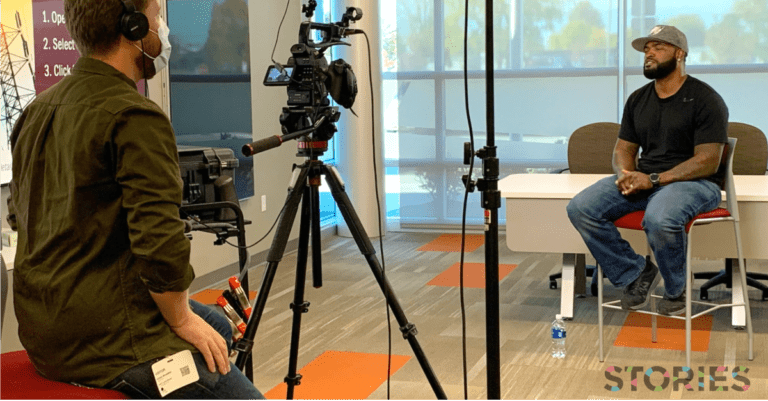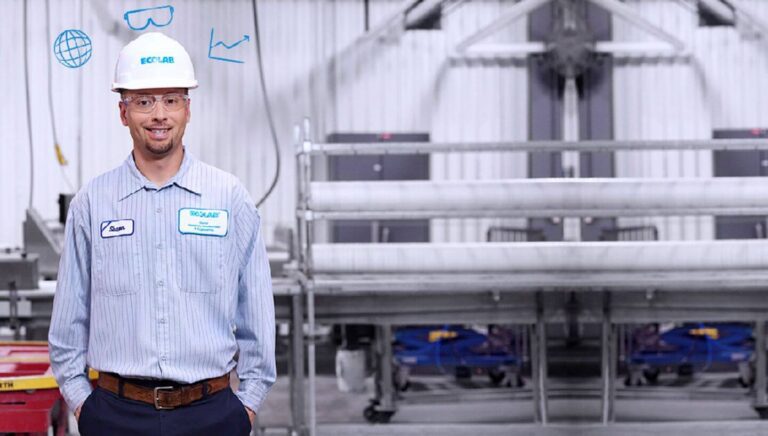Candidates are looking to find out what it's really like to work at your company. And they're not going to take your word (or words on your website) for it. They need hard evidence of your employee experience and culture. This has always been the case, but in 2020? Multiply it by a thousand.
This year, unprecedented challenges have placed a heavy burden of proof on your employer brand to show how it supports its people. The COVID-19 pandemic has shaken the globe and upended the lives of your coworkers. Additionally, there's a public tipping point demanding workplaces actively disavow racism and address their part in institutional racism head-on.
Candidates are keenly interested in how you've cared for your team members in response to these events, and how your culture has held up or changed in response. They want to see what it looks like to work at your company right now.
And they're only going to believe it when they hear it from your employees.
Promises need proof
Your team members are the people who experience and form the culture that results from organizational actions, attitudes, and values. Talent audiences will only believe that your company gives empathy and flexibility in a post-COVID workplace or that it truly really values diversity and inclusion when they see and hear proof from employees.
Finding that proof is not hard. At Stories Inc., we've found that employees overwhelmingly want to share their stories of how work has changed this year, and what their workplaces have done specifically to support them. In fact, they're sharing heartfelt appreciation for how they're being taken care of and how culture has positively adjusted in the pandemic.
And, team members from some companies are eager to share how their company is creating an inclusive environment. Organizations just beginning the work towards greater equity and belonging are sharing stories that illustrate their commitment. These are the stories your candidates want to hear.
Content needs to address the 'right now'
Sharing employees' stories of what their company did to care for their physical safety, emotional health and financial well-being during the pandemic, or what their company is doing to create inclusive and diverse environments, requires you to lean in to these topics in your recruitment marketing content. When we look at candidate-facing channels, many companies are not addressing these concerns at all. Some organizations may fear that sharing team member stories about these issues isn't "safe," or that the content will not remain relevant to candidates over time.
But, what is not helpful to candidates is culture content that only shows them what it used to look like to work there.
Employees need to share COVID experiences
In our work uncovering team member stories that reveal culture, employee storytellers are bringing up how their life has changed since the pandemic before we can even ask. They have a lot to say about their work and workplace right now. Candidates care about how a workplace treated their employees during our nation's most turbulent and uncertain times. Thus, the experiences captured now will be valuable post-COVID, providing important answers to candidate questions.
We're currently hearing that after sharing their experiences with us, employees feel recognized and valued by their employer. When organizations prioritize listening to employee experiences by creating the time and space for employees to share stories, companies reinforce that employees matter.
Of course, with many people working from their homes or in workplaces that have adapted for safety, capturing stories looks a little different these days ... and those differences are key elements of their stories. Candidates can visually see the changes you've made to care for them, from onsite personal protective equipment to what socially-distanced measures are in place right now.
We at Stories Inc. feel so strongly that the stories employees have to tell now are exactly what candidates need to experience visually, that we developed a new way of capturing stories. We developed our Virtual Story Sessions as a way to facilitate interviews virtually and create compelling videos remotely. In some cases, we've swapped visiting workplaces to shipping storytellers a box of video and audio gear. And we leave ample time for our virtual interviews, because the storytellers are brimming over with examples that communicate so well the culture they're experiencing now.
Candidates need to see inclusion
If you already have an inclusive corporate culture that encourages diversity, it's possible to show that to talent audiences. The key is to uncover personal examples of inclusion and equality from all over your organization. When employee storytellers share how they are celebrated for being themselves, those stories provide the essential supporting evidence to the wording on the Diversity and Inclusion section of your careers site, and elsewhere. When you amplify underrepresented voices, you also give team members who want to come forward chances to be seen, heard and recognized.
When we produce recruitment marketing videos virtually for our partners, we weave in photos and footage to honor the stories and bring them to life. These supporting sources provide opportunities to communicate a larger look at the overall members of your organization and more perspectives. While stories of "now" are vital, stories that communicate the diversity, inclusion, belonging and equity that your team members experience remain valuable content to candidates. And, when you present a variety of stories, you show diversity in action.
Companies need to express their commitment
What if you are just now starting your journey towards inclusion and belonging? What if you don't have the proof of these efforts just yet?
You're not alone. Most organizations have not arrived at an ideal cultural state of inclusion and belonging. In fact, even the most progressive companies view it as a continual journey: no one is perfect.
No matter where you are in this work, don't stay silent about your company's commitment and the things you're doing to improve. Candidates, and current employees, really care about your efforts. Recent surveys have revealed that 55 percent of employees believe their companies should be doing more to increase diversity and inclusion, and 86 percent of job seekers say that a workplace that has representation from many backgrounds is important to them. So, you need to say something about the work you're doing, no matter where you are in your journey.
Your company's specific actions in pursuit of greater equity and diversity are the stories you should share. The people who are leading the change and benefitting from your efforts are your storytellers. If your company has made public statements about increasing diversity or hiring pledges, share stories about what you're doing specifically to drive towards those goals.
Showing what you're doing to learn and the actions you're taking are the ways you can prove to candidates your sincerity.
Don't force D&I content about aspects of culture that aren't there. Producing content that's not based upon what really exists in your culture or misrepresents how far along the company is with inclusion is a huge mistake, and will result in candidates feeling fooled once they arrive as employees. Instead, candidly share about your goals for improving. What's real is what resonates.
Your employer brand needs these stories
The stories happening at workplaces right now are exactly what your candidates want to hear. The support an employee received from a manager while working from home with two young children. Why a leadership team member felt it was important to take a public stance against racism. The lessons a team learned when they had to change the way they worked due to the pandemic. Draw out those stories from your employees, capture them, and share them. Those stories are your employer brand.




